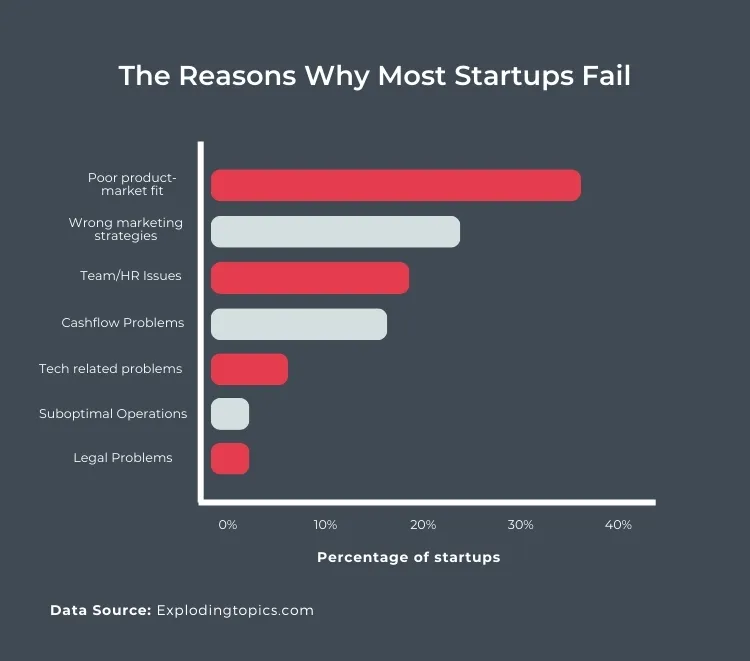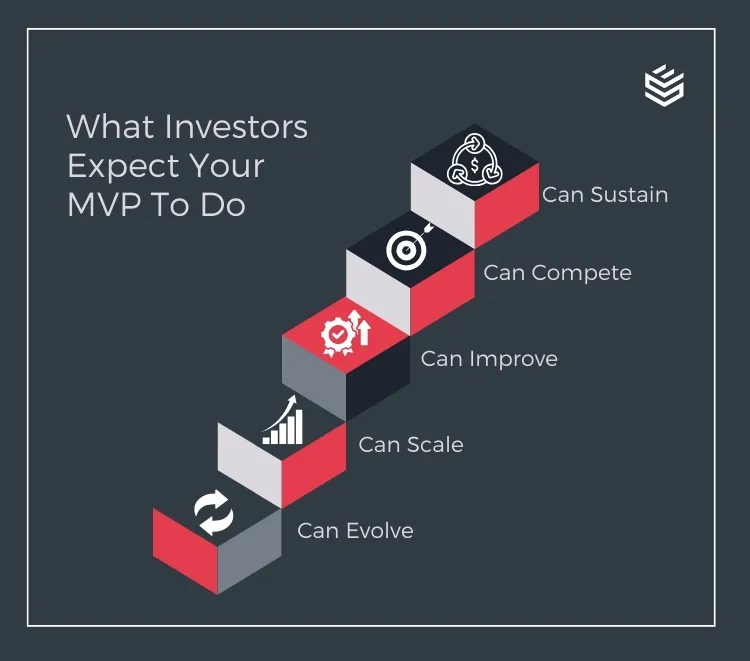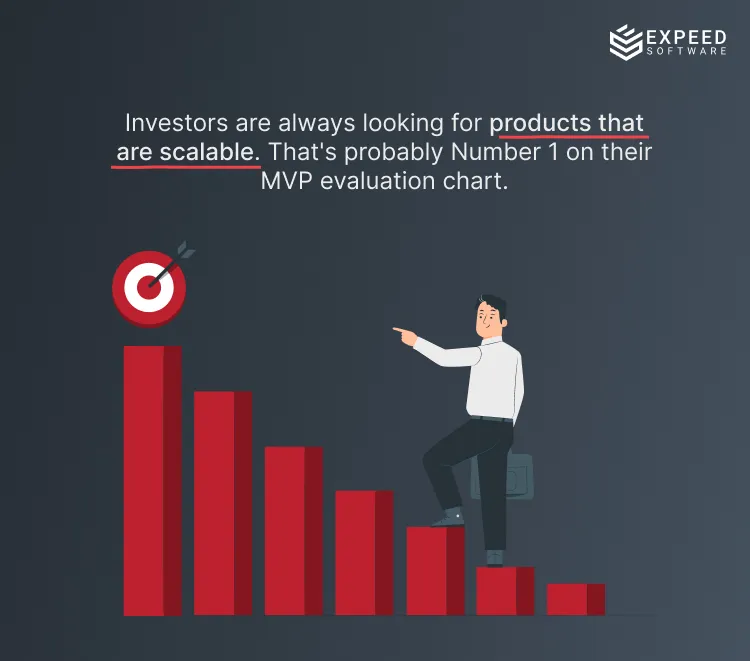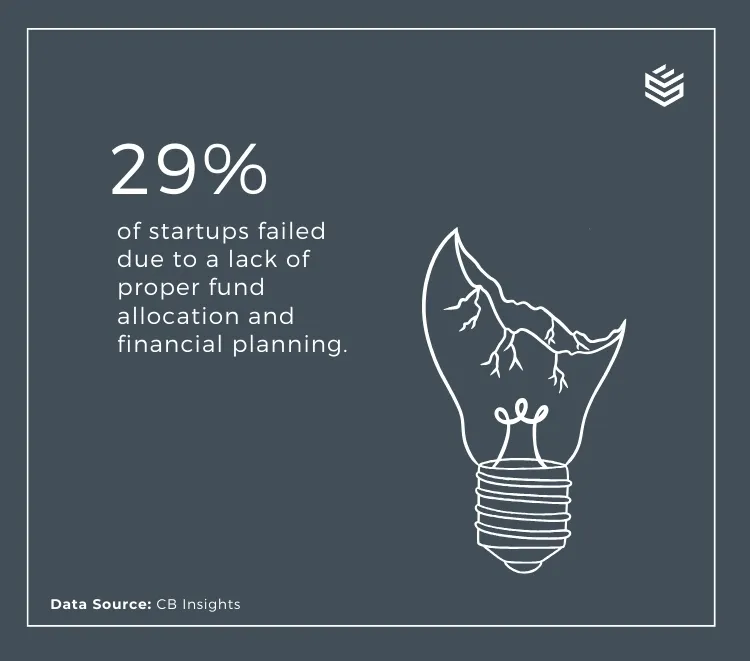App Development for Raising Investor Funding
Every business owner starts his or her journey with an idea, a solution to a problem. And the road that follows, from inspiration to the first sale, is possibly the longest and the hardest one. But despite the iron will, focused efforts, and support from the web and mobile app development companies, not all start-up entrepreneurs find success. In fact, according to the latest reports, almost 90% of startups are doomed to fail, of which 10% don’t even make it till the end of their first year.
It’s interesting to note that the most common reason cited in the reports for startup failure was poor product-market fit. This means that rudimentary data on market demand and zeal to innovate alone can not run businesses.
Along with conducting thorough research on the product, the economic and political climate of the market, and user behavior patterns, businesses and supporting mobile app development companies need to build strong MVPs or Minimum Viable Products that are a result of user testing and regular iterations.

Data source: Explodingtopics.com
But then again, a good MVP cannot alone save the day. Many startup businesses fail due to a lack of proper funding or financial management. Almost 16% of the start-ups cite cashflow problems as the reason for failure.
This is where investor funding plays a big role. Of all the reasons a small business could fail, cash crunch is the most painful one – you have a brilliant solution, and a beautiful design, but you just don’t have the juice to keep it running long enough.
So if you’re a product owner or an application developer working on a venture product, here are the most important factors to keep in mind while building an MVP that can spike investor interest.
What’s an MVP and why is it important for your startup business?
The textbook definition for an MVP is an early version of a product that has just enough features to attract early users and get feedback on overall usability. MVPs are built early in the product development cycle, primarily to test the product idea with a beta group of ideal users. According to the Lean Startup methodology, pioneered by Eric Ries, “building an MVP allows startups to learn from real user feedback and iterate quickly, increasing their chances of success.”
Apart from testing and perfecting the end product, startups use the MVP to attract investor funding. The goal here is to offer evidence for the product’s functionality, usefulness, ease of use, and adoption so that it can be built out and marketed on a larger scale.
But with the number of startup failures on the rise, investors are becoming more cautious about the MVPs they choose to cast their votes. Entrepreneurs these days need to have a solid pitch along with well-researched market data to support their hypothesis before they start discussions with venture capitalists. But regardless of the sales pitch, it all comes down to the product quality or the MVP performance to convince the investors.
Which brings us to the next important question – what should your MVP include? Can you have too many features on your MVP?
Five Things to Remember When Building an MVP for Fundraising
Ask any web or mobile app development company about the number of features you should ideally include in your MVP, and we guarantee you’re going to get different answers!
There are two popular schools of thought – one believes it’s best to keep 2-3 core functionality features in your MVP while the other believes in displaying the entire spectrum of product possibilities in the MVP, even if in its rudimentary form. While there’s merit to both arguments, the decision finally comes down to the product type and the industry you’re in.
But if you ask us, it’s not the final number of features that’s going to win you that initial funding. Investors are going to put their money into products that meet their top 5 criteria –
- Can evolve
- Can scale
- Can improve
- Can compete
- Can sustain

Now let’s see what this translates into, especially for your tech team or web and mobile app development company working on that MVP.
1. Can Evolve: Be ready to pivot (but not more than 2 times)
According to a survey by Startup Genome, startups that pivot once or twice raise 2.5x more money, have 3.6x better user growth, and are 52% less likely to scale prematurely than startups that pivot more than 2 times or not at all. The lesson here is that all MVPs must be built on an architecture that allows them to incorporate user feedback quickly and change core functionality if needed.
As an investor, the willingness and ability to quickly adapt to changing market conditions and user reactions is a huge positive. Especially for a society that is largely digital today, user behavior changes can happen overnight, and an application that can weather such fluctuations and dole out updates quickly is a safer bet.
2. Can Scale: Leave room for more
This one is a no-brainer. Investors need products that can grow, period. From an application development perspective, there are two ways to look at this – 1. building an application that can handle increased traffic and data volume without impacting performance, and 2. designing an application that can incorporate more features and use cases for engaging and appealing to a larger audience.

As a product developer, your team needs to take the right call on database design and optimization techniques right from the MVP stage. Although there’s nothing stopping you from going with a traditional database design initially and switching it later on, having a solid data and load-balancing plan right from the start speaks confidence to your investors.
Meanwhile, make sure to leave breadcrumbs and placeholders for features you anticipate your product can support in the future. Having too many features on your MVP can be distracting and could needlessly affect the performance of your core functionality. Instead, let the extended version of your app take a minimal space so that all your stakeholders get a better understanding of your vision for your product.
3. Can Improve: Try to perfect your core features
Granted that your MVP does not need to have all the features working in perfect alignment with the long-term business goals, but it is kind of expected that you have at least 1 or 2 core functionalities completed to the very last detail. By doing that you’re communicating two very important things to your investors:
that you’ve planned your core functionality well, factoring in the user experience and convenience at every step.
and that you’re technically skilled enough and well-versed in relevant technologies required to execute such features flawlessly.
Building out an MVP that has at least one core feature completed with immaculate detailing and seamless rendering, proves the point that you and your app development company have what it takes to see the entire project through.
4. Can Compete: Shine where your competitors couldn’t
The web and mobile app development market is highly competitive, and businesses can’t seem to complete a single phase of digital transformation without stumbling upon a hundred look-alike applications that promise to deliver the same results.
In such a scenario the answer to the question, ‘Why should we invest in your app,’ needs to be a solid one that screams innovation, adaptability, and scalability.
The best way to do that is by really studying your competition before even starting your MVP process. Understanding what others are offering allows you to see what they’re missing and how you can solve problems that don’t seem to have solutions so far. That’s part 1.
Part 2 is anticipating your competitors to mimic your features once your product is released, and creating a roadmap for improving your product offerings, quality, and performance so that you stay one step ahead of your competitors. You can incorporate this into your MVP by leaving placeholders for your future offerings (as we discussed earlier) based on predictive market tendencies and expected tech disruptions.
5. Can Sustain: Don’t underestimate your production budget
According to CB Insights, 29% of startups failed due to a lack of proper fund allocation and financial planning. A lot of mobile app development teams commit the mistake of underestimating their overall development budget, probably too confident in their own team’s ability to finish the project earlier.

Data Source: CB Insights
From complications in design and functionality, and team unavailability to simple miscommunication issues, there are many reasons why a software project can go beyond budget. The smart thing to do is to factor in possible budget stretches and plan your costs for different phases of development with a buffer.
Conducting risk assessments and having risk mitigation strategies in place before the project starts is a good way to avoid unwanted cost surprises. Bringing in an expert for planning and allocating your funds during the development process is also a show of maturity that an investor would appreciate.
In order to support a sustainable development plan, your team must leverage cost-effective technologies and services wherever possible without compromising on the quality or performance of the core features. For instance, using open-source software and pay-as-you-go cloud services, helps startups minimize expenses during MVP development.
Start Your MVP Journey with Expeed
Building the first MVP is a big step for any startup business, one that requires careful planning and flawless execution. As a product owner, you need a strong web or mobile app development team to support you during this stage, taking care of the entire production lifecycle, managing your funds, and meeting deadlines without compromising on app performance, while you get to focus on your marketing and launch strategies, and investor pitches.
At Expeed, we’ve been supporting startups, and small businesses to create intuitive applications that capture the loyalty of their customers. With a team as experienced as ours, working with top Fortune 500 companies, we can guide you right from project discovery to user journey mapping to post-release iterations and updates. Trust us to build an MVP that’s ready for fundraising.

